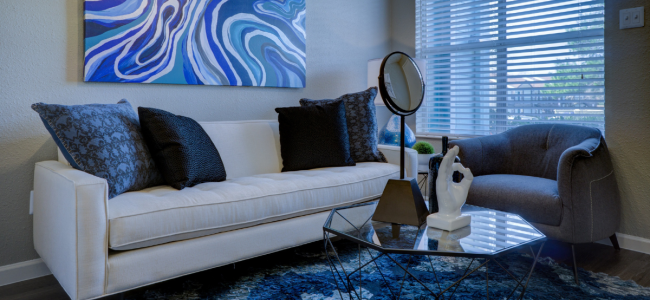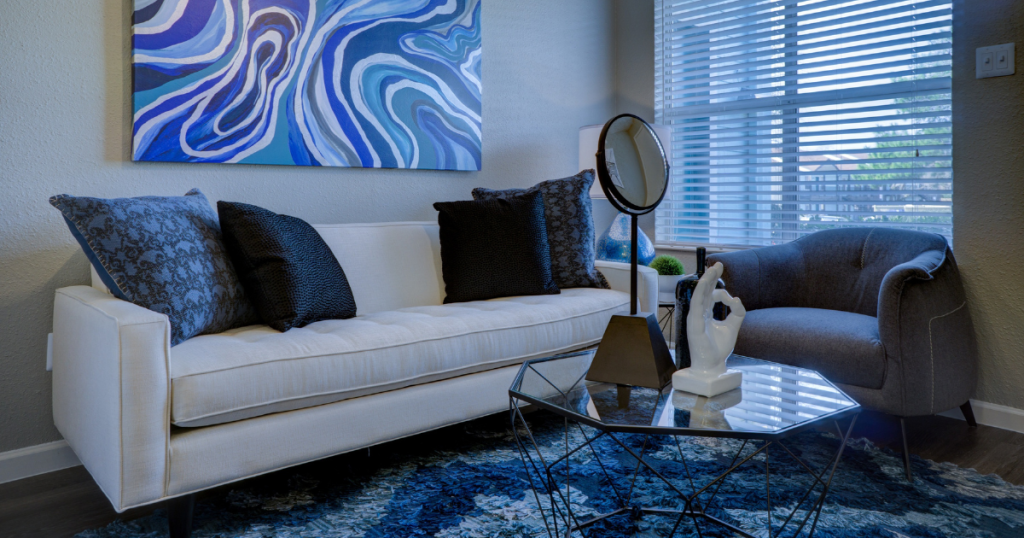

Leather sofas were once a staple in many homes. However, times are changing, and people’s preferences are evolving. In recent years, leather sofas have started to fall out of style, and there are many reasons why. In this article, we’ll discuss why leather sofas are going out of style and what you can do about it.
Sustainability Concerns
One of the primary reasons why leather sofas are going out of style is due to sustainability concerns. People are becoming more conscious of the impact that their choices have on the environment, and leather production can be harmful. The leather industry is known to cause pollution, and the process of tanning leather can produce harmful chemicals that are released into the environment. As a result, many consumers are choosing to buy sustainable furniture made from eco-friendly materials like bamboo or recycled plastic.
Changing Aesthetics
Another reason why leather sofas are falling out of favor is that the design aesthetic of many homes is changing. Contemporary interior design favors clean lines and a more minimalist look. Leather sofas can be bulky and take up a lot of visual space, which can clash with the overall design aesthetic of a room. As a result, many people are opting for furniture with more streamlined designs that fit better with modern decor.
Cost
Leather sofas can be quite expensive, and many people are looking for more affordable alternatives. Synthetic materials like microfiber and polyester have become increasingly popular because they offer similar durability and comfort at a lower price point. Additionally, the rise of online retailers and direct-to-consumer brands has made it easier than ever to find affordable furniture options.
Maintenance
Leather sofas require a lot of maintenance to keep them looking their best. They need to be regularly cleaned and conditioned to prevent cracking and drying out. Additionally, leather can be easily damaged by spills and stains, which can be difficult to remove. Many people are looking for furniture that requires less upkeep and is more forgiving when it comes to spills and stains.
Animal Welfare Concerns
Finally, many people are concerned about animal welfare and the treatment of animals in the leather industry. Leather is made from animal hides, and some people find the idea of using animal products for furniture to be unethical. As a result, they are choosing to buy vegan furniture made from synthetic materials or plant-based alternatives.
What You Can Do About It
If you’re looking for a leather sofa alternative, there are many options available. Here are a few ideas:
- Choose Sustainable Materials: Look for furniture made from sustainable materials like bamboo, cork, or recycled plastic.
- Consider Synthetic Fabrics: Synthetic materials like microfiber and polyester can offer similar durability and comfort to leather at a lower price point.
- Opt for minimalist designs: Look for furniture with clean lines and a minimalist aesthetic that fits well with modern decor.
- Choose Low-Maintenance Options: Consider furniture that requires less upkeep and is more forgiving when it comes to spills and stains.
- Consider Vegan Furniture: If animal welfare concerns are important to you, consider buying vegan furniture made from synthetic materials or plant-based alternatives.
The Environmental Impact of Leather Sofas
One of the main reasons why leather sofas are going out of style is due to concerns over their environmental impact. The leather industry is known for being resource-intensive, with large amounts of water, energy, and chemicals used to produce leather products. Additionally, the production of leather often involves animal cruelty and exploitation.
By contrast, non-leather sofa materials such as polyester or recycled fabrics can be much more eco-friendly and sustainable. They require fewer resources to produce and are often made from recycled materials, which helps reduce waste and pollution.
If you’re concerned about the environmental impact of your furniture choices, opting for a non-leather sofa may be a more sustainable choice.
How to Choose the Right Non-Leather Sofa
With so many options available, choosing the right non-leather sofa for your home can be a daunting task. When selecting a non-leather sofa, there are several factors to consider, such as:
- Material: Non-leather sofas can be made from a variety of materials, such as cotton, linen, wool, polyester, or microfiber. Each material has unique properties, such as durability, texture, and maintenance requirements, so it’s important to choose a material that meets your needs.
- Style: Non-leather sofas come in a wide range of styles, from traditional to modern. Consider your aesthetic and the overall style of your home when selecting a sofa.
- Comfort: Comfort is key when it comes to selecting a sofa. Look for a sofa with supportive cushions and a sturdy frame to ensure long-term comfort and durability.
- Budget: Non-leather sofas can vary greatly in price, so it’s important to set a budget before you start shopping. Keep in mind that a higher price doesn’t necessarily equate to higher quality, so be sure to do your research and read reviews before making a purchase.
FAQs
Are leather sofas going out of style?
While leather sofas have been a popular choice for many years, there has been a recent shift towards more eco-friendly and sustainable materials, which has led to a decrease in popularity for leather sofas.
What are some alternatives to leather sofas?
There are many alternatives to leather sofas, including sofas made from synthetic materials such as microfiber or polyester, as well as sofas made from natural materials such as cotton, linen, or wool.
What are some advantages to non-leather sofas?
Non-leather sofas can offer several advantages over leather sofas, including lower cost, easier maintenance, and a wider variety of design options. Non-leather materials can also be more eco-friendly and sustainable than leather.
Are non-leather sofas less durable than leather sofas?
It depends on the specific material used for the sofa. Some non-leather materials may be less durable than leather, while others may be just as durable or even more so. It’s important to research the specific material before making a purchase.
Can non-leather sofas be as stylish as leather sofas?
Absolutely! Non-leather sofas can come in a wide variety of styles, colors, and textures, making them just as stylish and versatile as leather sofas. With so many options available, it’s easy to find a non-leather sofa that fits your style and aesthetic.



